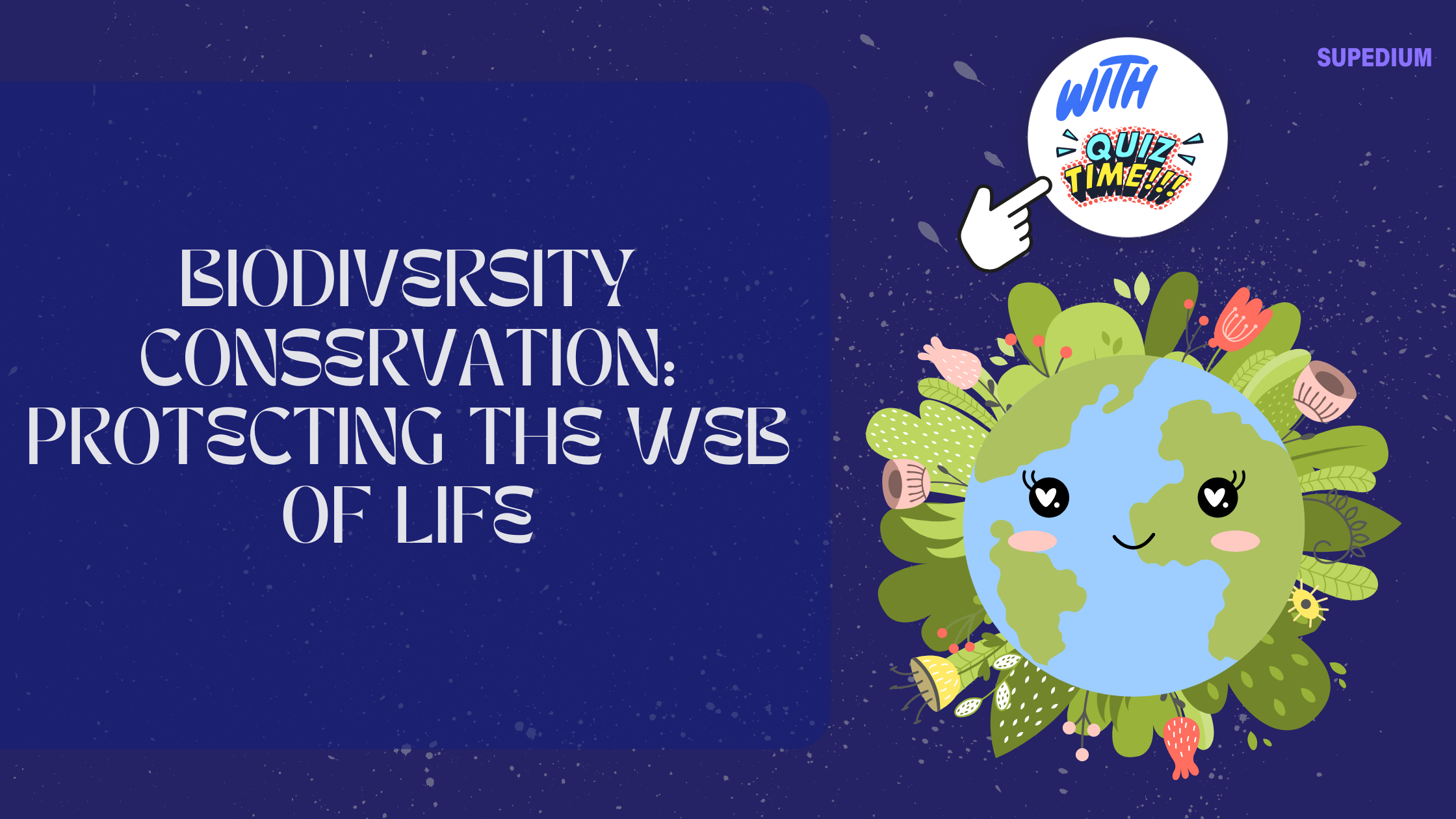Table of Contents
![]()
Biodiversity, the variety of life on Earth, encompasses the genetic, species, and ecosystem diversity that supports the planet’s ecological balance. Its conservation is essential for maintaining the health of our planet and ensuring the well-being of future generations. This article explores the concept of biodiversity, the threats it faces, strategies for its conservation, and the future directions of these efforts.
Understanding Biodiversity and Its Importance
Biodiversity can be classified into three main categories:
- Genetic Diversity refers to the variation in genes within a species. This diversity is crucial for the adaptability and survival of species, enabling them to cope with changing environments and diseases.
- Species Diversity includes the variety of species within a given area. Each species plays a unique role in its ecosystem, contributing to its stability and functionality.
- Ecosystem Diversity encompasses the variety of ecosystems, such as forests, wetlands, and grasslands, each providing distinct services and habitats for various species.
The importance of biodiversity extends beyond its intrinsic value. Biodiversity provides numerous ecosystem services:
- Provisioning Services: These include the supply of essential resources like food, water, and raw materials. For instance, diverse plant species contribute to crop resilience and provide medicinal resources.
- Regulating Services: Biodiversity helps regulate climate, air quality, and water cycles. For example, wetlands act as natural water filters and flood regulators.
- Cultural Services: These are the non-material benefits derived from ecosystems, such as recreation, aesthetic enjoyment, and spiritual fulfillment.
- Supporting Services: These include processes like nutrient cycling and soil formation, which are fundamental to maintaining ecosystem health.
Economically, biodiversity contributes to sectors like agriculture, pharmaceuticals, and tourism. Scientifically, it provides insights into natural processes and the potential for new discoveries.
Threats to Biodiversity
Despite its importance, biodiversity is under severe threat from various factors:
- Habitat Destruction: Human activities such as deforestation, urbanization, and agricultural expansion lead to habitat loss and fragmentation. This not only reduces the living space available for wildlife but also disrupts ecosystem functions.
- Pollution: Pollution of air, water, and soil has detrimental effects on biodiversity. Contaminants can poison species, disrupt reproductive processes, and alter habitat conditions.
- Climate Change: Rising temperatures, changing precipitation patterns, and extreme weather events impact species and ecosystems. For example, coral reefs are suffering from bleaching due to increased sea temperatures.
- Overexploitation: Overfishing, illegal wildlife trade, and unsustainable hunting reduce species populations and disrupt ecological balance. Many species face the risk of extinction due to these pressures.
- Invasive Species: Non-native species introduced to new environments can outcompete, prey on, or bring diseases to native species, leading to ecological imbalances and loss of biodiversity.
Strategies for Biodiversity Conservation
Addressing these threats requires a multifaceted approach:
- Protected Areas: Establishing national parks, wildlife reserves, and marine protected areas helps safeguard habitats and species from human interference. These areas serve as refuges for wildlife and maintain ecological processes.
- Legal and Policy Frameworks: International agreements like the Convention on Biological Diversity (CBD) and national legislation provide guidelines and enforceable measures for conservation efforts. Policies aim to protect endangered species, regulate land use, and promote sustainable practices.
- Restoration Projects: Habitat restoration involves rehabilitating degraded ecosystems to their natural state. Species reintroduction programs aim to reestablish populations of endangered species in their native habitats.
- Sustainable Practices: Promoting sustainable agriculture, fisheries, and eco-friendly tourism helps reduce the impact on biodiversity. Practices such as organic farming and responsible fishing methods minimize environmental damage.
- Community Involvement: Engaging local communities and indigenous peoples in conservation efforts leverages traditional knowledge and fosters stewardship. Education and advocacy programs raise awareness and encourage public participation in conservation activities.
Case Studies in Biodiversity Conservation
Several successful conservation efforts highlight the effectiveness of various strategies:
- Yellowstone National Park (USA): One of the world’s first national parks, Yellowstone has been a model for protected area management. It has successfully restored populations of species like the gray wolf, which were once extirpated.
- Great Barrier Reef Marine Park (Australia): This marine protected area is crucial for conserving coral reefs and marine life. Despite challenges from climate change and pollution, efforts to manage fishing and tourism have contributed to its resilience.
- African Elephant Conservation Programs: Initiatives across Africa aim to protect elephants from poaching and habitat loss. These programs include anti-poaching patrols, habitat restoration, and community education.
However, these successes also come with challenges, such as balancing conservation with local economic needs and addressing global threats like climate change.
Future Directions and Emerging Trends
Looking ahead, several emerging trends and technologies hold promise for enhancing biodiversity conservation:
- Technological Innovations: Advances in genetic engineering, such as CRISPR, offer potential for species conservation through genetic modification and disease resistance. Remote sensing and Geographic Information Systems (GIS) improve monitoring and management of ecosystems.
- Global Initiatives and Partnerships: Collaborative efforts like the United Nations Decade on Ecosystem Restoration aim to restore degraded ecosystems worldwide. Cross-border protected areas foster international cooperation in conservation.
- Climate Change Mitigation and Adaptation: Strategies to combat climate change, including carbon sequestration and adaptation plans for vulnerable species, are critical for protecting biodiversity in a warming world.
Conclusion
Biodiversity conservation is crucial for maintaining the balance of life on Earth and ensuring a sustainable future. While significant threats challenge this goal, a combination of protected areas, legal frameworks, restoration projects, sustainable practices, and community involvement provides a robust foundation for conservation efforts. By embracing emerging technologies and global partnerships, we can enhance our ability to protect and restore the planet’s rich tapestry of life.






Be the first to comment